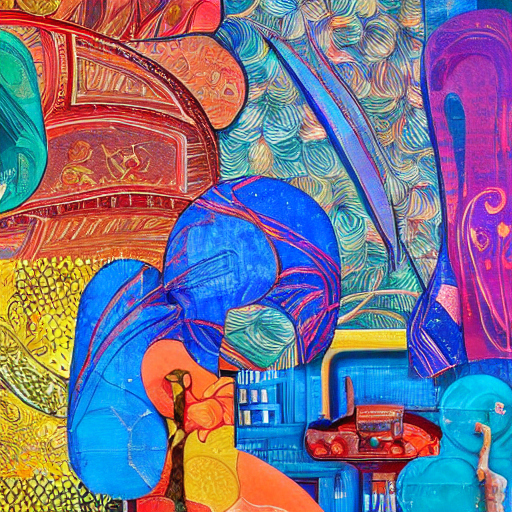Art is a profound manifestation of human creativity and expression, an intangible yet powerful force that transcends barriers, communicates emotions, and provokes thought. From ancient cave paintings to contemporary digital creations, art evolves with time, reflecting human societies’ changing landscapes. Understanding art’s impact requires exploring its various forms, purposes, and influences on individuals and communities.
The Historical Evolution of Art
Art’s history is as complex and varied as humanity itself. Early humans used primitive tools to create cave paintings, often depicting hunting scenes and daily life, laying the foundation for art as a means of documentation and expression. As civilizations developed, so did artistic techniques and themes. Classical art, characterized by its devotion to realism and beauty, gave way to the more abstract and expressive styles of modern and contemporary art. This evolution reflects not just advancements in artistic materials and techniques but also shifts in societal values and philosophies.
The Renaissance marked a pivotal transformation where art embraced science and humanism, producing masterpieces that remain influential today. Artists like Leonardo da Vinci and Michelangelo celebrated human anatomy, perspective, and nature, merging art with emerging scientific understanding. This era’s artworks are revered for their technique and ability to capture human emotion and intellect, setting the standard for artistic excellence.
The Forms and Mediums of Art
Art exists in myriad forms, each with its unique methods and expressive capabilities. Traditional forms such as painting, sculpture, and architecture continue to flourish alongside newer mediums like photography, film, and digital art. Each form offers distinct possibilities for creators to convey their visions, making art an ever-expanding field of experimentation and innovation.
In painting, artists play with colors, textures, and techniques to create visual narratives or express emotions. Sculpture allows for a three-dimensional exploration of form and space, offering tactile experiences that paintings cannot. Architecture combines functionality with aesthetics, impacting communities by shaping physical environments that embody cultural identities.
Modern technology has broadened art’s scope, with digital art and multimedia installations pushing boundaries of creativity. Digital tools have democratized art-making, enabling more people to engage in artistic pursuits and reach global audiences. This evolution speaks to art’s adaptability, ensuring its relevance in an increasingly technological world.
The Purpose and Impact of Art
Art serves multiple purposes – from personal expression to public discourse – and can impact individuals and societies in profound ways. On a personal level, creating or engaging with art can be a therapeutic process, offering means for emotional release and self-discovery. It can ignite inspiration, foster empathy, and provide solace in times of adversity.

In communal settings, art can function as a social mirror, reflecting societal issues and prompting dialogue. It can challenge norms, provoke thought, and inspire change, playing a crucial role in social justice movements. Street art and murals, for instance, have become powerful mediums for voicing marginalized communities’ struggles and aspirations, transforming public spaces into centers for activism and awareness.
Furthermore, art contributes to cultural preservation, encapsulating identities, traditions, and histories for future generations. It offers a tangible connection to the past, ensuring cultural legacies endure beyond their temporal origins. Museums and galleries safeguard these artistic treasures, allowing communities to celebrate their heritage and explore global artistic landscapes.
Art in the Modern Age
Today’s art world is a dynamic blend of tradition and innovation, where creators are not confined by conventional boundaries. The advent of the internet has revolutionized art dissemination, making it more accessible and diverse. Platforms like social media, online galleries, and virtual reality experiences allow artists to showcase their work to a global audience, fostering cross-cultural exchanges and collaborations.
Contemporary artists often address contemporary issues such as climate change, inequality, and identity politics, using their work as platforms for raising awareness and advocating for change. The rise of eco-art, for example, highlights environmental concerns, urging audiences to reconsider their relationship with nature and emphasizing art’s role in fostering societal change.
Moreover, the digital age has given rise to new art forms such as AI-generated art, where technology becomes a creative partner. These emerging forms prompt debates about authenticity, creativity, and the role of technology in art, challenging traditional notions of artistry and authorship.
The Future of Art
As we look to the future, art will undoubtedly continue to evolve in response to technological, social, and cultural developments. AI and machine learning are set to become integral to artistic creation, leading to new forms of collaboration between humans and machines. This synergy holds the potential to redefine what art is and who can be considered an artist.
Art education will play a significant role in this evolving landscape, equipping new generations with the skills and critical thinking necessary to navigate and contribute to the art world’s future. Emphasizing creativity alongside technology and traditional techniques will ensure a holistic approach to learning, fostering versatile artists capable of adapting to changing demands.
Furthermore, the growing awareness of art’s role in mental health and well-being could lead to increased integration of art therapy in healthcare and education. This shift recognizes art’s intrinsic value beyond aesthetics, highlighting its capacity to enhance life quality and community welfare.
In conclusion, art is an ever-morphing entity, weaving through the fabric of human existence, expanding our understanding of the world and ourselves. Its ability to adapt, innovate, and inspire ensures its continued relevance, making it an indispensable part of human culture and progress. As we journey forward, nurturing and celebrating the diversity of artistic expression will be key to unlocking its transformative potential for individuals and societies alike.